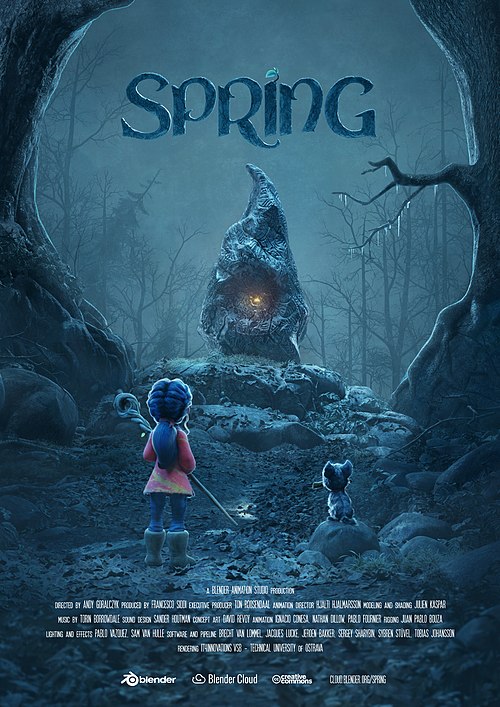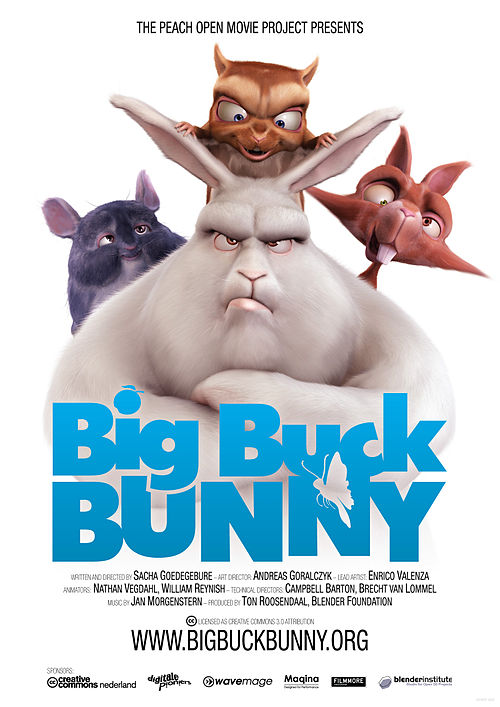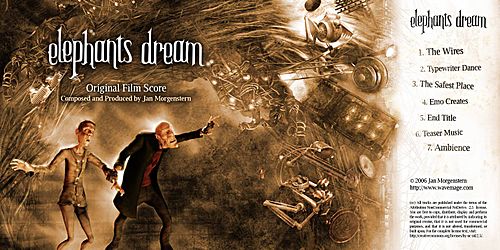Advertisement

Image source: Wikimedia Foundation (wikimedia.org)
Download Movie [Video Format: MP4]
Movie Source: Internet Archive (archive.org)
Advertisement
Advertisement
Flip The Frog - Little Orphan Willie
1930
Little Orphan Willie 1930 Flip The Frog Sound Cartoon by Ub Iwerks
Flip the Frog is an animated cartoon character created by American animator Ub Iwerks. He starred in a series of cartoons produced by Celebrity Pictures and distributed through Metro-Goldwyn-Mayer from 1930 to 1933. The series had many recurring characters besides Flip; including Flip's dog, the mule Orace, and a dizzy neighborhood spinster.
Flip was created by Ub Iwerks, animator for the Walt Disney Studios and a personal friend of Walt Disney in 1930, at the Iwerks Studios. After a series of disputes between the two, Iwerks left Disney and went on to accept an offer from Pat Powers to open a cartoon studio of his own and receive a salary of $300 a week, an offer that Disney was unable to match at the time. Iwerks was to produce new cartoons under Powers's Celebrity Pictures auspices and distributed by Metro-Goldwyn-Mayer. The first series he was to produce was to feature a character called Tony the Frog, but Iwerks disliked the name and it was subsequently changed to Flip.
Ub Iwerks planned to release the series in both color and black and white versions through Celebrity Productions, Inc.[1] The series attracted public attention in England by being the first color sound cartoon series, in the two-color British Multicolor System. These shorts were exhibited in England in color, but not in the United States where they were made. After four shorts had been produced (Flying Fists, Puddle Pranks and Little Orphan Willie, also all in Multicolor) MGM picked up the series. They agreed to exhibit Fiddlesticks and Flying Fists. Little Orphan Willie and Puddle Pranks were never copyrighted and remain in the public domain. MGM decided to produce the series entirely in black and white, releasing the ones produced in color in black and white versions only. Some have speculated that Techno-Cracked (1933) may have been photographed in Cinecolor. The Cinecolor process was a new two-strip color process that came out in 1932, the year that to the two-strip Technicolor process was discontinued in favor of their new three-strip process. Iwerks would go on to make extensive use of Cinecolor with his ComiColor Cartoon series.
Iwerks' studio quickly began accumulating new talent, such as animators Fred Kopietz, Irv Spence, Grim Natwick, and Chuck Jones (who worked at the Iwerks studio as a cel-washer before going on to inbetweening and then animating at the Leon Schlesinger studio). After the first two cartoons, the appearance of Flip the Frog gradually became less froglike. This was done under the encouragement of MGM, who thought that the series would sell better if the character were more humanized. Flip's major redesign is attributed to Grim Natwick, who made a name for himself at the Fleischer Studios with the creation of Betty Boop. Natwick also had a hand in changing Flip's girlfriend. In earlier films, she was consistently a cat, but Natwick made Flip's new girlfriend, Fifi, a human who shared distinct similarities with Betty (even down to her spit curls).
The frog's personality also began to develop. As the series progressed, Flip became more of a down-and-out, Chaplin-esque character who always found himself in everyday conflicts surrounding the poverty-stricken atmosphere of the Great Depression. Owing to the influx of New York City animators to Iwerks's studio, such as Natwick, the shorts became increasingly risqué. In Room Runners (1932), Flip, out of cash and luck, attempts to sneak out of his hotel in order to avoid paying his past-due rent. Another gag has Flip watch a girl taking a shower through a keyhole. In The Office Boy, released the same year, Flip tries to secure a low-level office job and meets a shapely secretary. At one point in the short, a mischievous mouse that Flip tries to apprehend scoots up the secretary's skirt. In A Chinaman's Chance (1933), Flip and his dog track down the notorious Chinese criminal Chow Mein. While investigating in a Chinese laundry, Flip stumbles into an opium den, inhales the stuff via opium pipe, and begins hallucinating.
The character eventually wore out his welcome at MGM. His final short was Soda Squirt, released on October 12, 1933. Subsequently, Iwerks replaced the series with a new one starring an imaginative liar named Willie Whopper. Flip became largely forgotten by the public in the coming years. However, the character would make a small comeback when animation enthusiasts and historians began digging up the old Iwerks shorts. All of the Flip cartoons are now available in the 2004 Region 2 Flip the Frog DVD set released by Mk2/Lobster in France. Most are available in Region 1, in particular on the Cartoons That Time Forgot series.
Flip was created by Ub Iwerks, animator for the Walt Disney Studios and a personal friend of Walt Disney in 1930, at the Iwerks Studios. After a series of disputes between the two, Iwerks left Disney and went on to accept an offer from Pat Powers to open a cartoon studio of his own and receive a salary of $300 a week, an offer that Disney was unable to match at the time. Iwerks was to produce new cartoons under Powers's Celebrity Pictures auspices and distributed by Metro-Goldwyn-Mayer. The first series he was to produce was to feature a character called Tony the Frog, but Iwerks disliked the name and it was subsequently changed to Flip.
Ub Iwerks planned to release the series in both color and black and white versions through Celebrity Productions, Inc.[1] The series attracted public attention in England by being the first color sound cartoon series, in the two-color British Multicolor System. These shorts were exhibited in England in color, but not in the United States where they were made. After four shorts had been produced (Flying Fists, Puddle Pranks and Little Orphan Willie, also all in Multicolor) MGM picked up the series. They agreed to exhibit Fiddlesticks and Flying Fists. Little Orphan Willie and Puddle Pranks were never copyrighted and remain in the public domain. MGM decided to produce the series entirely in black and white, releasing the ones produced in color in black and white versions only. Some have speculated that Techno-Cracked (1933) may have been photographed in Cinecolor. The Cinecolor process was a new two-strip color process that came out in 1932, the year that to the two-strip Technicolor process was discontinued in favor of their new three-strip process. Iwerks would go on to make extensive use of Cinecolor with his ComiColor Cartoon series.
Iwerks' studio quickly began accumulating new talent, such as animators Fred Kopietz, Irv Spence, Grim Natwick, and Chuck Jones (who worked at the Iwerks studio as a cel-washer before going on to inbetweening and then animating at the Leon Schlesinger studio). After the first two cartoons, the appearance of Flip the Frog gradually became less froglike. This was done under the encouragement of MGM, who thought that the series would sell better if the character were more humanized. Flip's major redesign is attributed to Grim Natwick, who made a name for himself at the Fleischer Studios with the creation of Betty Boop. Natwick also had a hand in changing Flip's girlfriend. In earlier films, she was consistently a cat, but Natwick made Flip's new girlfriend, Fifi, a human who shared distinct similarities with Betty (even down to her spit curls).
The frog's personality also began to develop. As the series progressed, Flip became more of a down-and-out, Chaplin-esque character who always found himself in everyday conflicts surrounding the poverty-stricken atmosphere of the Great Depression. Owing to the influx of New York City animators to Iwerks's studio, such as Natwick, the shorts became increasingly risqué. In Room Runners (1932), Flip, out of cash and luck, attempts to sneak out of his hotel in order to avoid paying his past-due rent. Another gag has Flip watch a girl taking a shower through a keyhole. In The Office Boy, released the same year, Flip tries to secure a low-level office job and meets a shapely secretary. At one point in the short, a mischievous mouse that Flip tries to apprehend scoots up the secretary's skirt. In A Chinaman's Chance (1933), Flip and his dog track down the notorious Chinese criminal Chow Mein. While investigating in a Chinese laundry, Flip stumbles into an opium den, inhales the stuff via opium pipe, and begins hallucinating.
The character eventually wore out his welcome at MGM. His final short was Soda Squirt, released on October 12, 1933. Subsequently, Iwerks replaced the series with a new one starring an imaginative liar named Willie Whopper. Flip became largely forgotten by the public in the coming years. However, the character would make a small comeback when animation enthusiasts and historians began digging up the old Iwerks shorts. All of the Flip cartoons are now available in the 2004 Region 2 Flip the Frog DVD set released by Mk2/Lobster in France. Most are available in Region 1, in particular on the Cartoons That Time Forgot series.




